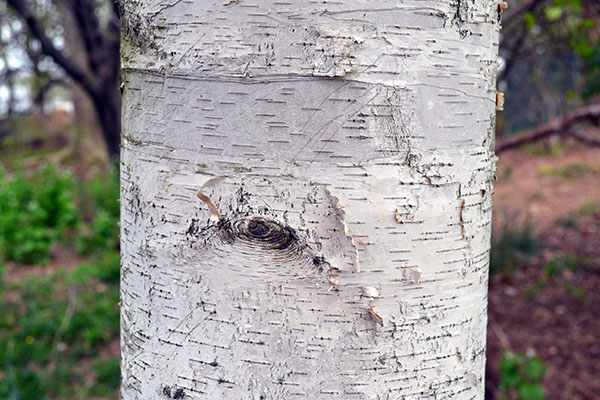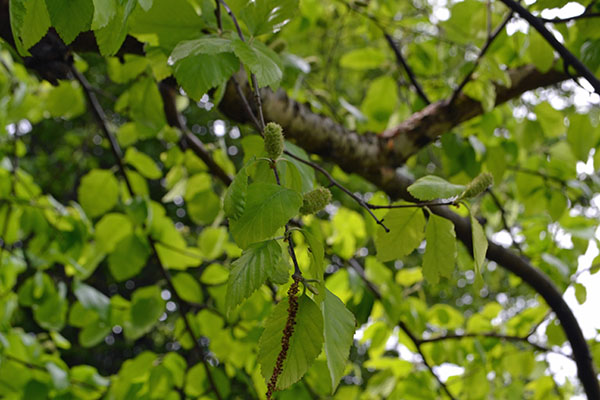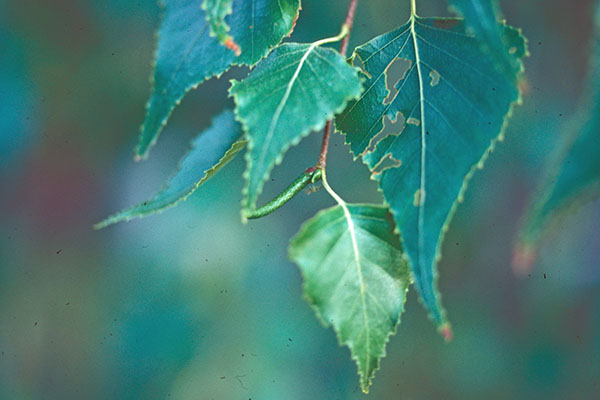Betula papyrifera
Paper Birch, Canoe Birch
Southern Canada, northern U.S.; distributed in moist uplands and colder exposures.
Medium-sized, pyramidal to rounded form; narrow, open crown and drooping side branches; more open and upright than B. pendula. Trunk often divides and forms a multistemmed plant. Medium to fast growth rate.
Full sun, cool moist sites with well-drained acid soi but adaptable to many soils. Introlerant of drought; does not grow to maturity on open, exposed sites in southereastern PA.
Attractive, exfoliating bark on multiple trunked tree; easily transplanted. Good yellow fall color. Not a particularly tough tree so it isn't ideal for planting in high pollution or high stress areas.
Dark green in summer. Yellow in fall. Alternate, simple, 2 to 4 inches long, ovate, sharply pointed, serrate margin. Generally larger and more rounded than B. pendula. :Yellow in fall
Buds are pointed, brown-black, .20 to .40 inches long. Male catkins mainly in 3's and some 2's; 2 to 4 inches long.
White, exfoliating on older trunks. Horizontal lenticels on twigs and branches.
Not of ornamental value
Not of ornamental value. Nutlet.
Seeds, cuttings.
'Chickadee' - Narrow, columnar-conical selection with striking white bark.
'Prairie Dream' - Dark green leaves, golden-yellow fall color; snow-white bark exfoliates with age; bronze border resistant.
'Renaissance Compact' - Tight compact pyramidal form, semi-glossy rich green leaves.







